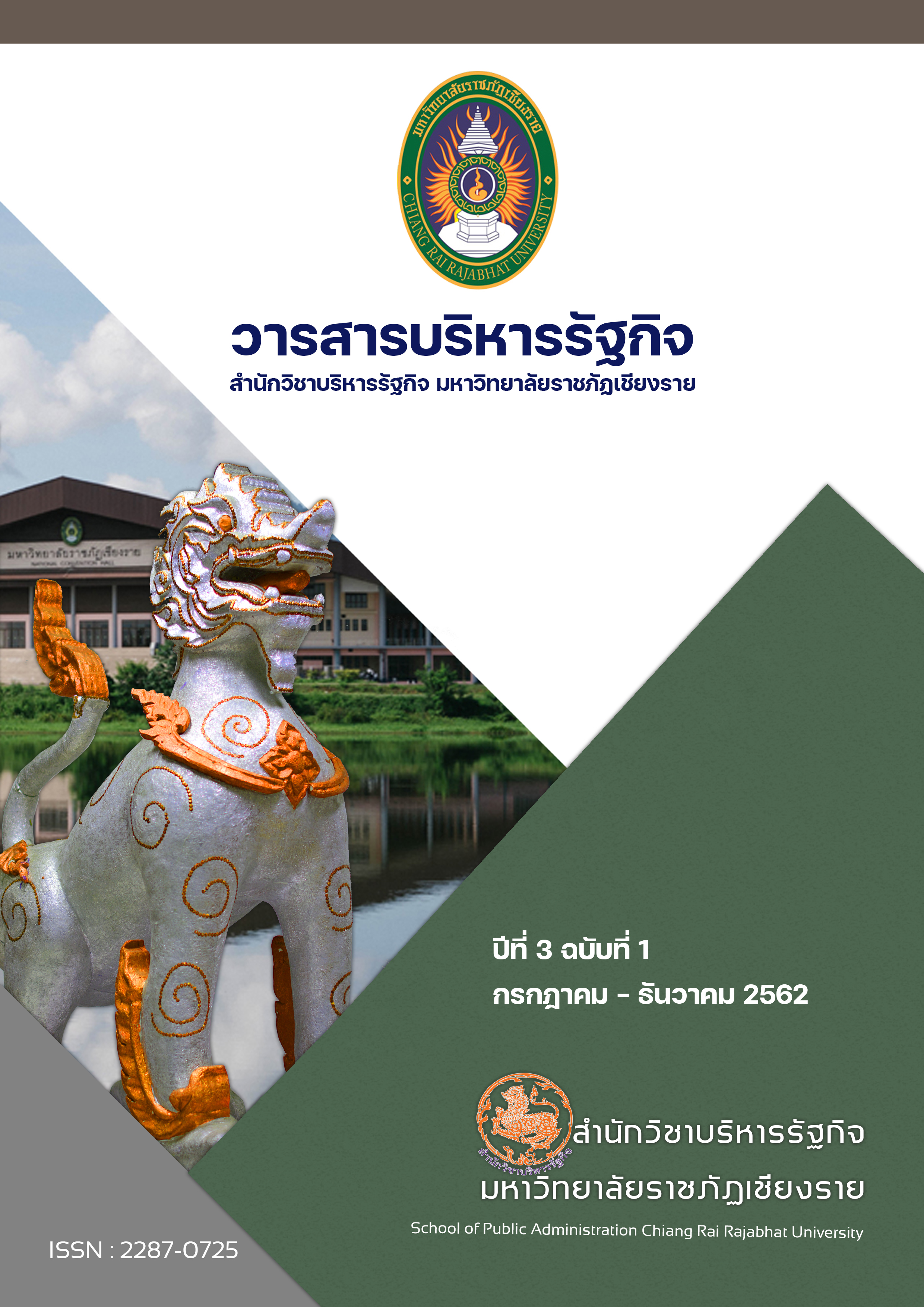The Relationships Between Leadership Effectiveness and Competitiveness of Small- and Medium-Sized Enterprises in Chiang Mai Province
Main Article Content
Abstract
The objectives of this research were to study 1) the leader effectiveness of small- and medium-sized enterprises in Chiang Mai province 2) the competitiveness of SMEs in Chiang Mai, and 3) the relationship between the effectiveness of SME leaders and the competitiveness of SMEs in Chiang Mai. The sample group used in this research consisted of 400 SME administrators who were juristic persons. The questionnaire was used as a tool to collect data. The validity of the questionnaire was 0.68 - 1.00 and the reliability of the questionnaire was 0.97. [The data were analyzed by means of] structural equation analysis The results of the research revealed that 1) the analysis of the opinion toward leader effectiveness was at a high level. 2) the analysis of the opinion toward competitiveness was at a high level. 3) the analysis of the relationship between the effectiveness of SME leaders and the competitiveness of SMEs showed that the leader effectiveness had the same relationship with the competitiveness at the coefficient level of 1.31 and the significance level of 0.01.
Article Details
References
Bass, B. M., & Avolio, B. J. (1997). Transformational leadership: A response to critiques, In M. M. Chemers & R. Ayman (Eds.), Leadership theory and research: perspectives and directions (pp. 49-80). San Diego, CA: Academic Press.
Beal, R. M. & Yasai-Ardekani, M. (2000). Performance implications of aligning CEO functional experiences with Competitive strategies. Journal of Management, 26(4), 733-762.
Jorge, P. M., Eve, M. P., Juan, J. T., Maria, D. L., & Jose, F. M. (2015). Organizational design, quality management and competitive advantage in hotels. International Journal of Contemporary Hospitality Management, 28(4), 762-784.
Maina, M. (2012). “Total Quality Operations Effectiveness and Competitive Advantage in Horticultural Industry in Kenya”. University of Nairobi. Kenya.
Ministry of Information and Communication Technology. (2016). Digital development plan for economy and society. Retrieved March 15, 2019 from http://www.mict.go.th/assets/portals/1/files/590613_4Digital_Economy_Plan-Book.pdf
Office of Small and Medium Enterprises Promotion. (2017). Small and Medium Enterprise Situation Report 2017. Retrieved March 15, 2019 from http://119.63.93.73/sme2015/Report/Summary
Office of the National Economic and Social Development Council. (2018). National Economic and Social Development Plan No. 12 (2017-2012). Retrieved November 15, 2018 from https://www.nesdb.go.th/ewt_news.php?nid=6420&filename=develop_issue
Panthai, B. (2014). Preliminary Educational Research Methodology. Bangkok : Ramkhamhaeng University Press.
Pulley, M. L., Sessa, V., & Malloy, M. (2002). E-leadership: a two-pronged idea. Training and Development. 35–47.
Raduan, C. R., Haslinda, A., & Alimin, I. I. (2010). A Review on the Relationship between Organizational Resources, Competitive Advantage and Performance. The Journal of International Social Research. 3(11). 490-498.
Sooksan, K., & Gayle, C. A. (2010). The power of vision: statements that resonate. Journal of Business Strategy, 31(1), 37-45.
Suk, B. C., Kihwan, K., S.M. Ebrahim, U., & Seung-Wan, K. (2016). “Transformational leadership and employee creativity: Mediating role of creative self-efficacy and moderating role of knowledge sharing”, Management Decision, 53(5), 894-910.
Vanichbancha, K. (2010). Using SPSS for windows for data analysis (2nd edition. 16). Bangkok : Thammasarn Company Limited.


